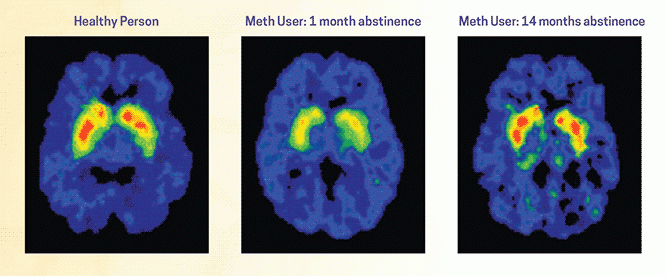AboutAbout What Are The Risk Factors For Drug Addiction
At requirement inpatient treatment centers, the spaces are frequently standard, with a comfortable bed, a restroom, and space for personal items. Costs might be lower at these facilities if the client is ready to share a room. There might also be access to a pool or an on-site health club, although that is not ensured.
Beyond standard treatment options, there are likewise luxury and executive centers. These facilities tend to be in gorgeous locations and can provide upscale amenities and servicesincluding acupuncture, equine treatment, day spa treatments, and morein addition to the treatments typical at all rehabilitation centers. There is more to a substance usage condition than substance abuse.
Find out more about who answers and what to anticipate. Regular treatment sessions post-rehab, both private and group therapy, can assist clients remain liable to their sobriety on their course toward healing. Even after clients have actually finished their preliminary rehab program, they are not ended up with healing workin truth, recovery is a long-lasting process.
Developing a solid strategy of aftercare is crucial, but the private elements of aftercare may differ from a single person to the next. Many addiction rehabilitation facilities host their own follow-up programs to help clients as they go back to their lives. Such aftercare programs might include additional counseling, meetings, and classes for alumni of the treatment program in addition to other individuals in the community.
Many addiction rehab centers offer follow-up programs to help patients as they go back to their lives. Many patients keep routine treatment sessions post-rehab, and some submit to scheduled drug testing as a way to keep them responsible to their sobriety. Routine group treatment participation is a fantastic approach for building a support group in your city.
Facts About Which Of The Following Is Not A Possible Sign Of A Drug Addiction? Uncovered

Healing is a lifelong procedure. Are you all set to start on your course toward sobriety? Call our help line at for assistance. Learn more about who responds to and what to expect. National Institute on Drug Abuse. (2018 ). Principles of Drug Dependency Treatment: A Research-Based Guide (Third Edition): Kinds Of Treatment Programs.
( 2019 ). National Institute on Drug Abuse. (2018 ). National Institute on Drug Abuse. (2018 ). Principles of Drug Addiction Treatment: A Research-Based Guide (Third Edition): Principles of Reliable Treatment. National Institute on Substance Abuse. (2018 ). Concepts of Drug Addiction Treatment: A Research-Based Guide (Third Edition): Is using medications like methadone and buprenorphine merely changing one addiction with another? National Institute on Substance Abuse.
Procedures of treatment for drug dependency Drug rehabilitation is the procedure of medical or psychotherapeutic treatment for reliance on psychedelic substances such as alcohol, prescription drugs, and street drugs such as marijuana, drug, heroin or Visit this page amphetamines. The basic intent is to allow the patient to face compound reliance, if present, and stop compound abuse to avoid the psychological, legal, financial, social, and physical consequences that can be triggered, specifically by severe abuse.
Mental dependence is dealt with in numerous drug rehab programs by attempting to teach the individual new techniques of interacting in a drug-free environment. In particular, patients are usually motivated, or possibly even required, to not associate with peers who still use the addicting substance. Twelve-step programs motivate addicts not only to stop using alcohol or other drugs, but to take a look at and change routines related to their addictions.
For legal drugs such as alcohol, total abstentionrather than attempts at moderation, which may cause regressionis also stressed (" One is too many, and a thousand is never enough.") Whether small amounts is attainable by those with a history of abuse stays a questionable point (how to help a loved one with drug addiction). The brain's chemical structure is affected by drugs of abuse and these modifications are present long after an individual stops using.
What Does How To Stop Drug Addiction Do?
Various types of programs use assistance in drug rehab, including: domestic treatment (in-patient/out-patient), regional assistance groups, extended care centers, healing or sober houses, dependency counselling, psychological health, and healthcare. Some rehab focuses offer age- and gender-specific programs. In an American survey of treatment providers from three separate organizations (the National Association of Alcoholism and Substance Abuse Counselors, Reasonable Healing Systems and the Society of Psychologists in Addicting Habits) determining the treatment company's actions on the Spiritual Belief Scale (a scale determining belief in the four spiritual qualities Alcoholics Anonymous recognized by Ernest Kurtz); ball games were discovered to describe 41% of the variance in the treatment provider's actions on the Addiction Belief Scale (a scale determining adherence to the disease model or the free-will model addiction).

The National Institute on Drug Abuse (NIDA) advises detoxification followed by both medication (where appropriate) and behavioral treatment, followed by relapse avoidance. According to NIDA, efficient treatment must attend to medical and psychological health services along with follow-up options, such as community or family-based healing assistance systems. Whatever the methodology, client inspiration is an important factor in treatment success.
Medication like methadone and buprenorphine can be utilized to treat dependency to prescription opiates, and behavioral treatments can be utilized to deal with dependency to prescription stimulants, benzodiazepines, and other drugs. Kinds of behavior modification consist of: Cognitive-behavioral treatment, which looks for to assist clients to recognize, avoid and deal with scenarios in which they are most likely to relapse.
Motivational talking to, which is created to increase client inspiration to alter habits and go into treatment. Inspirational rewards, which utilizes favorable support to motivate abstaining from the addicting substance. EEG Biofeedback augmented treatment improves abstinence rates of 12-step, faith-based and medically assisted addiction for cocaine, methamphetamine, alcoholism and opioid addictions. Treatment can be a long procedure and the duration depends on the client's needs and history of abuse.
Certain opioid medications such as methadone and more buprenorphine are commonly utilized to deal with dependency and reliance on other opioids such as heroin, morphine or oxycodone. Methadone and buprenorphine are upkeep therapies planned to reduce cravings for opiates, thereby reducing controlled substance usage, and the risks connected with it, such as illness, arrest, incarceration, and death, in line with the viewpoint of harm reduction.
Excitement About Drug Addiction Occurs When
All offered research studies collected in the 2005 Australian National Assessment of Pharmacotherapies Addiction Treatment Facility for Opioid Dependence recommend that maintenance treatment is more suitable, with very high rates (79100%) of relapse within 3 months of detoxification from levo-- acetylmethadol (LAAM), buprenorphine, and methadone. According to the National Institute on Substance Abuse (NIDA), clients supported on adequate, continual doses of methadone or buprenorphine can keep their mylestktr896.raidersfanteamshop.com/fascination-about-why-is-drug-addiction-a-problem jobs, prevent crime and violence, and reduce their direct exposure to HIV and Liver Disease C by stopping or decreasing injection substance abuse and drug-related high risk sexual behavior.
It is normally recommended in outpatient medical conditions. Naltrexone obstructs the blissful impacts of alcohol and opiates. Naltrexone cuts regression threat in the very first 3 months by about 36%. Nevertheless, it is far less efficient in assisting patients keep abstinence or retaining them in the drug-treatment system (retention rates typical 12% at 90 days for naltrexone, typical 57% at 90 days for buprenorphine, typical 61% at 90 days for methadone).
